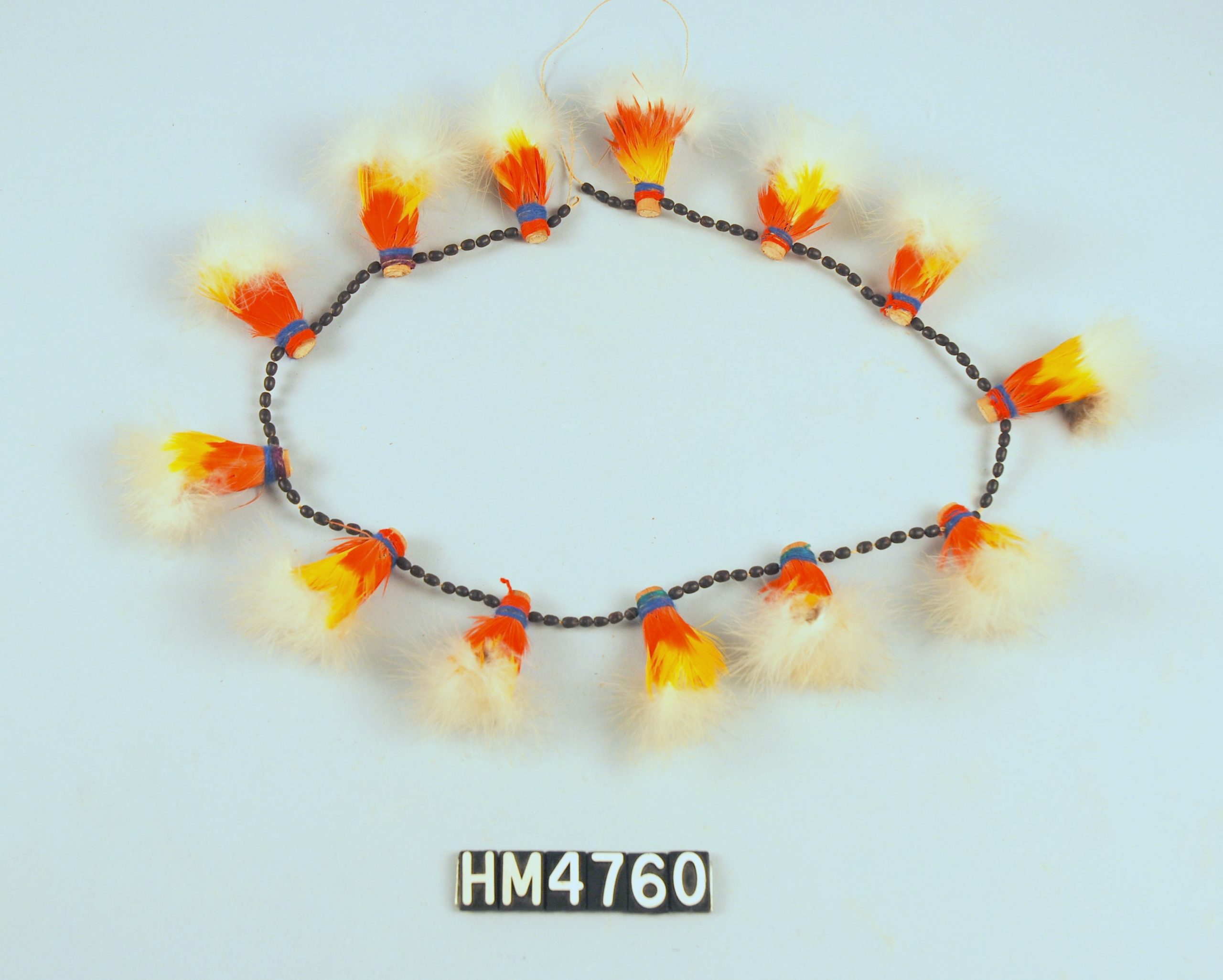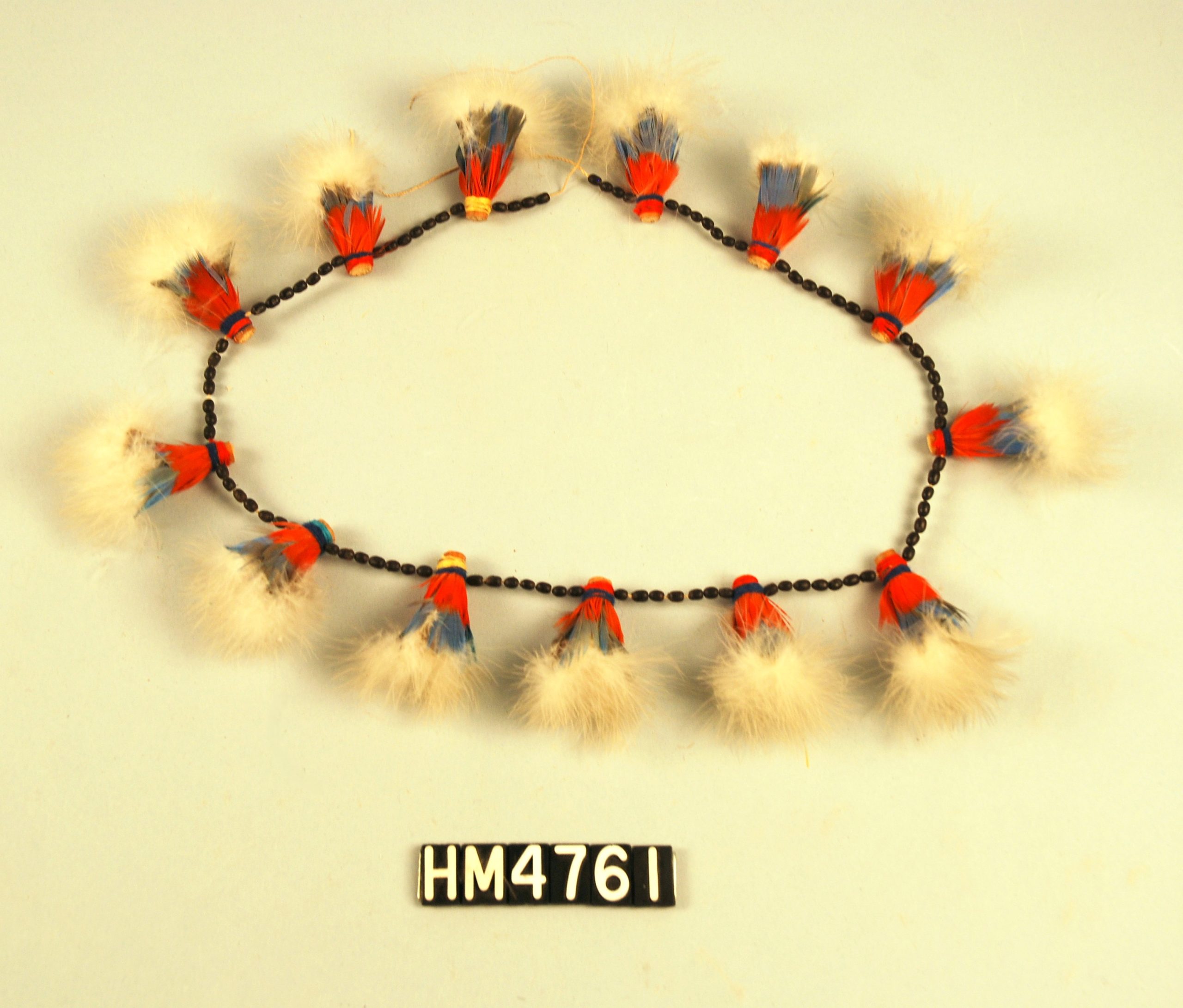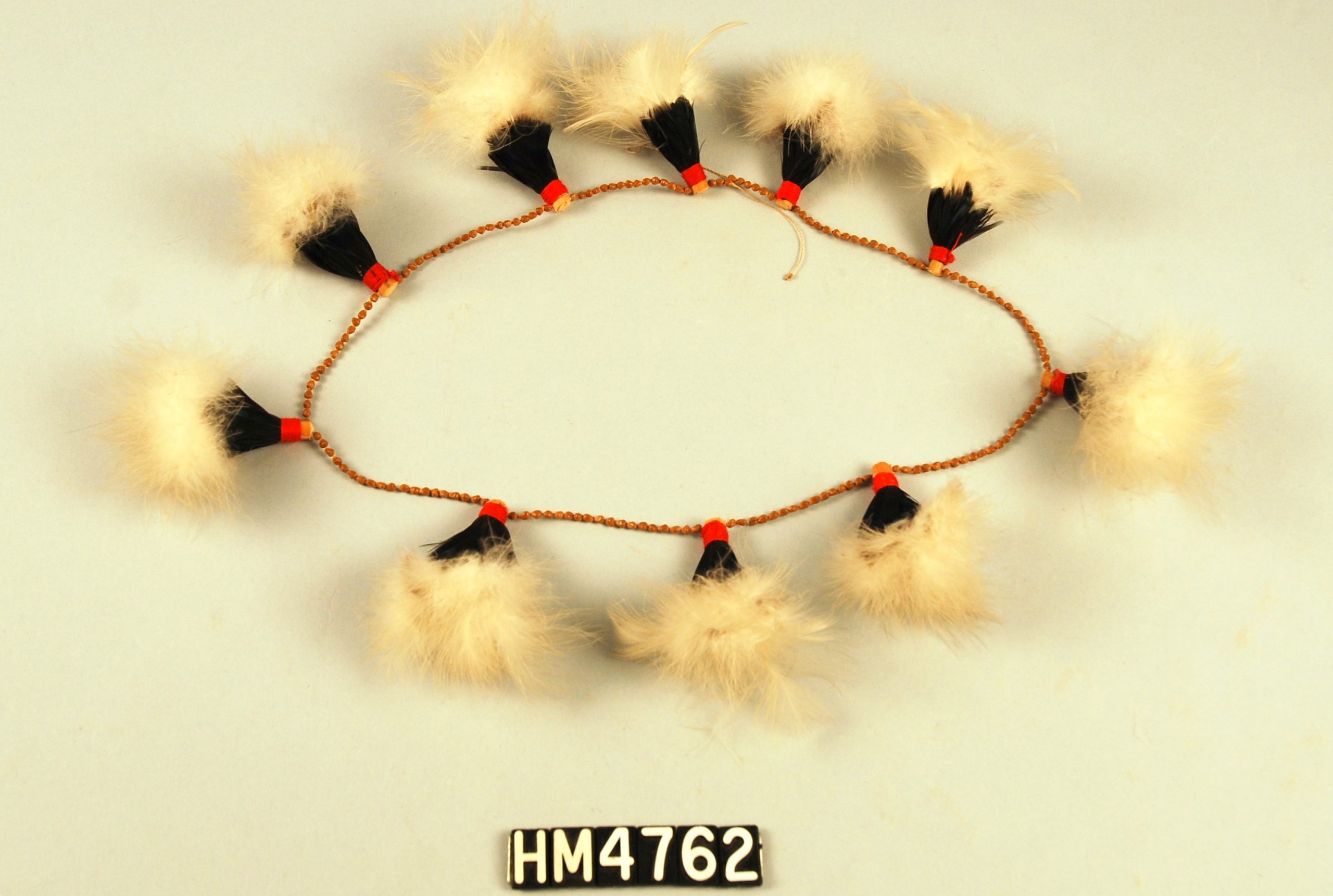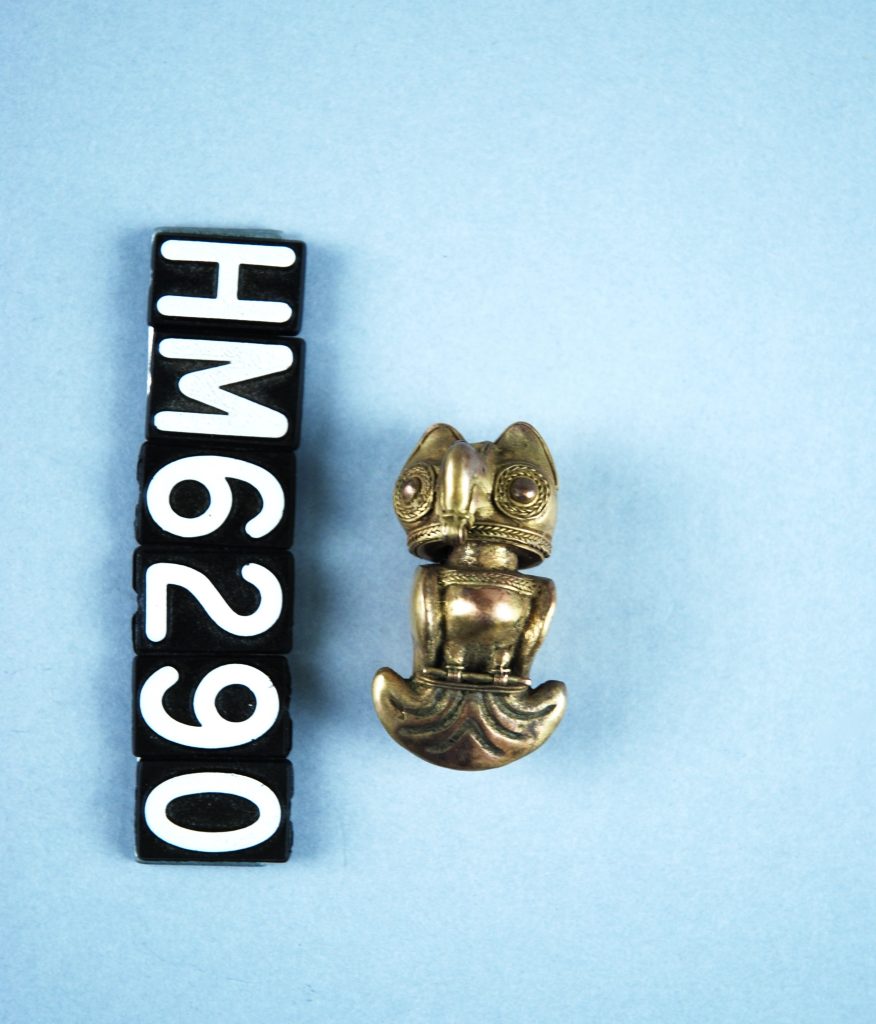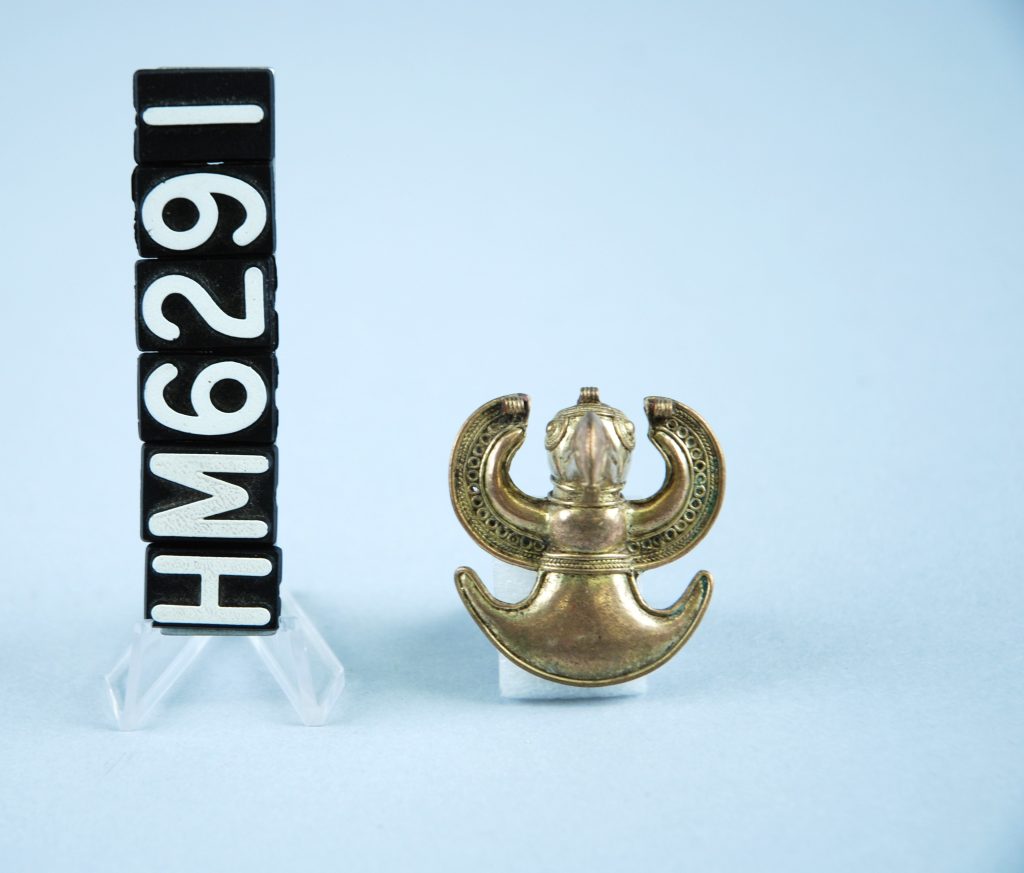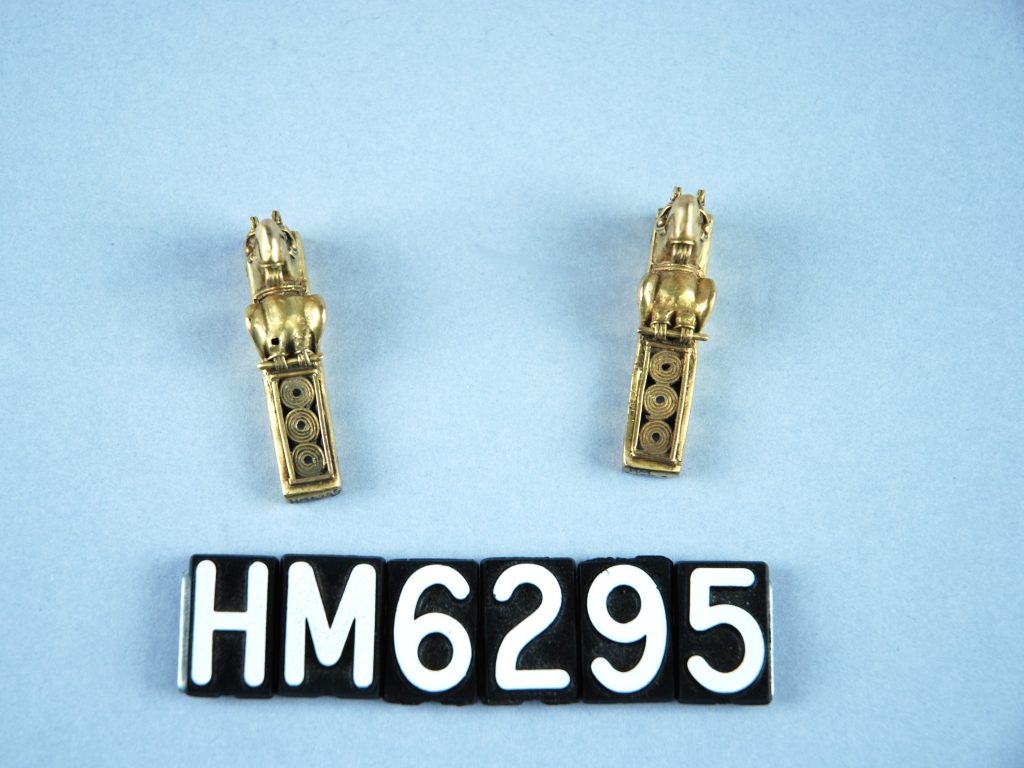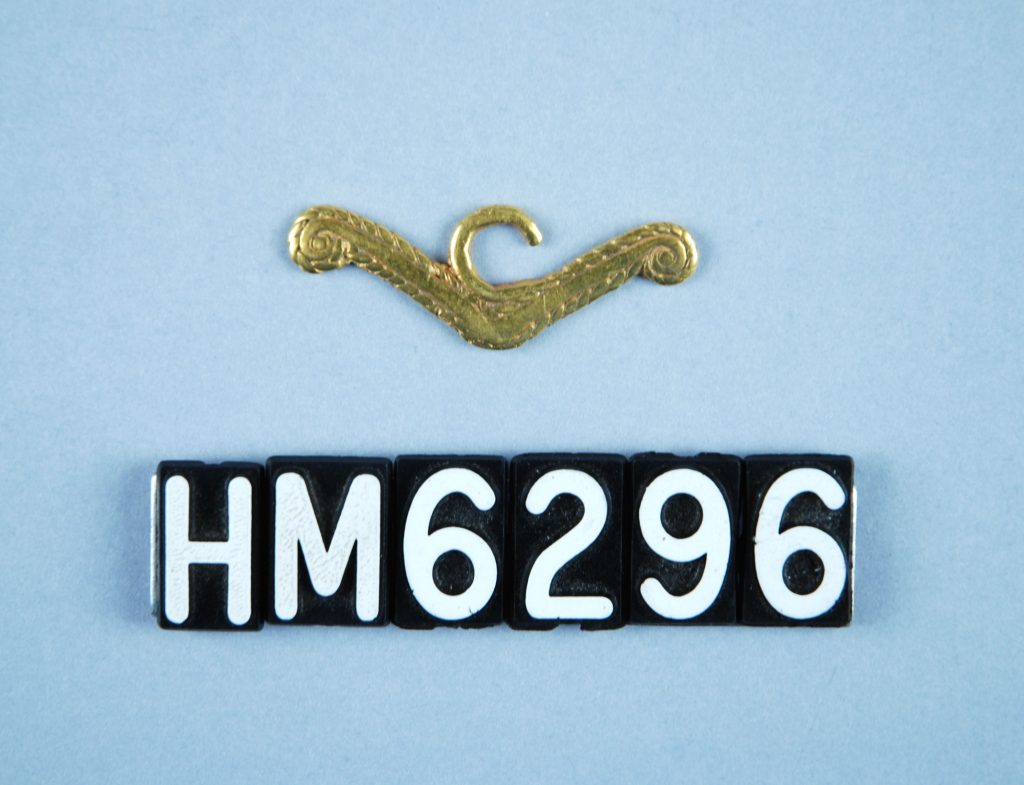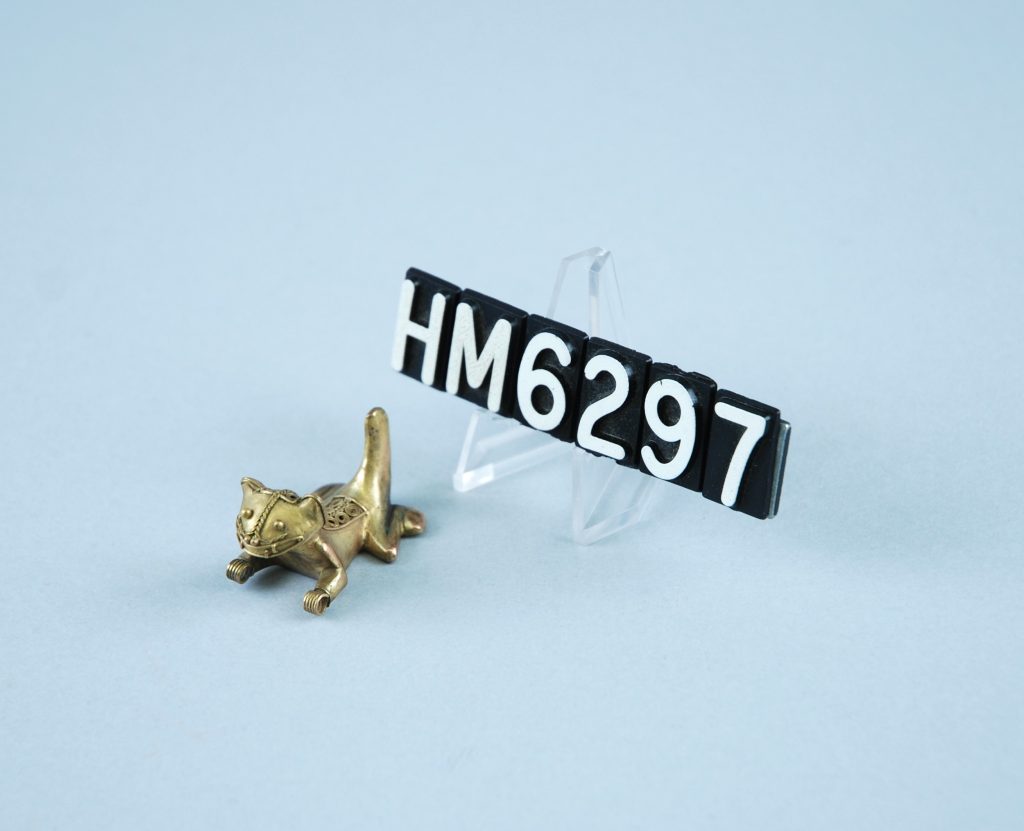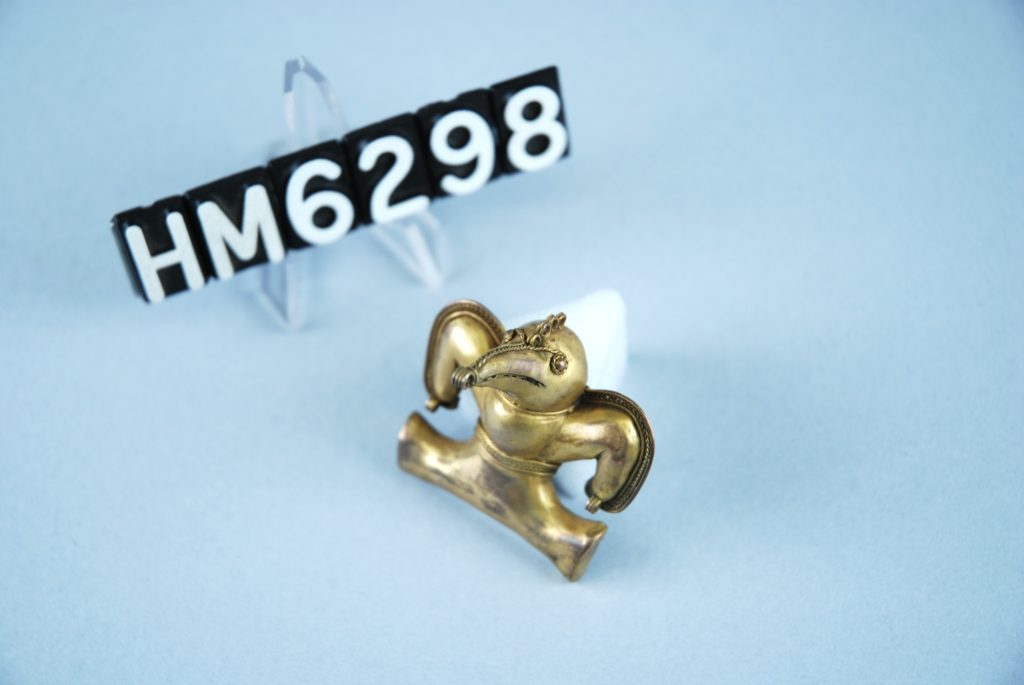South America

Decorative body art from the Amazon features exotic bird feathers–toucan, parrot and macaw–insects, such as jewel and rhinoceros beetles, seeds, and bones from fish, such as piranhas. Traders introduced glass beads which were used to create elaborate geometric designs for necklaces and bracelets, based on graphic traditions that date prior to contact.
Pre-Columbian cultures that developed in South America, especially in Peru, Columbia , Ecuador, learned to work gold, copper, and silver and made pendants and beads from Spondylus princeps or thorny oyster, which is found in the warm coastal waters off Ecuador.

Bahia Seated Figure
500 BC–AD 500
This seated figure from Bahia de Manta, Province of Manabi, Ecuador is wearing a headdress, necklace, earspools, and nose ring. The cultures of
this region specialized in diving for spondylus shells, which were traded throughout the region and as far north as Mexico.
William P. Palmer, III Collection

Kofan Carabid Beetle Necklace
c. 1960
This necklace is made from the elytra or forewings of carabid beetles, a colorful ground beetle.
Donated by Fred Knight
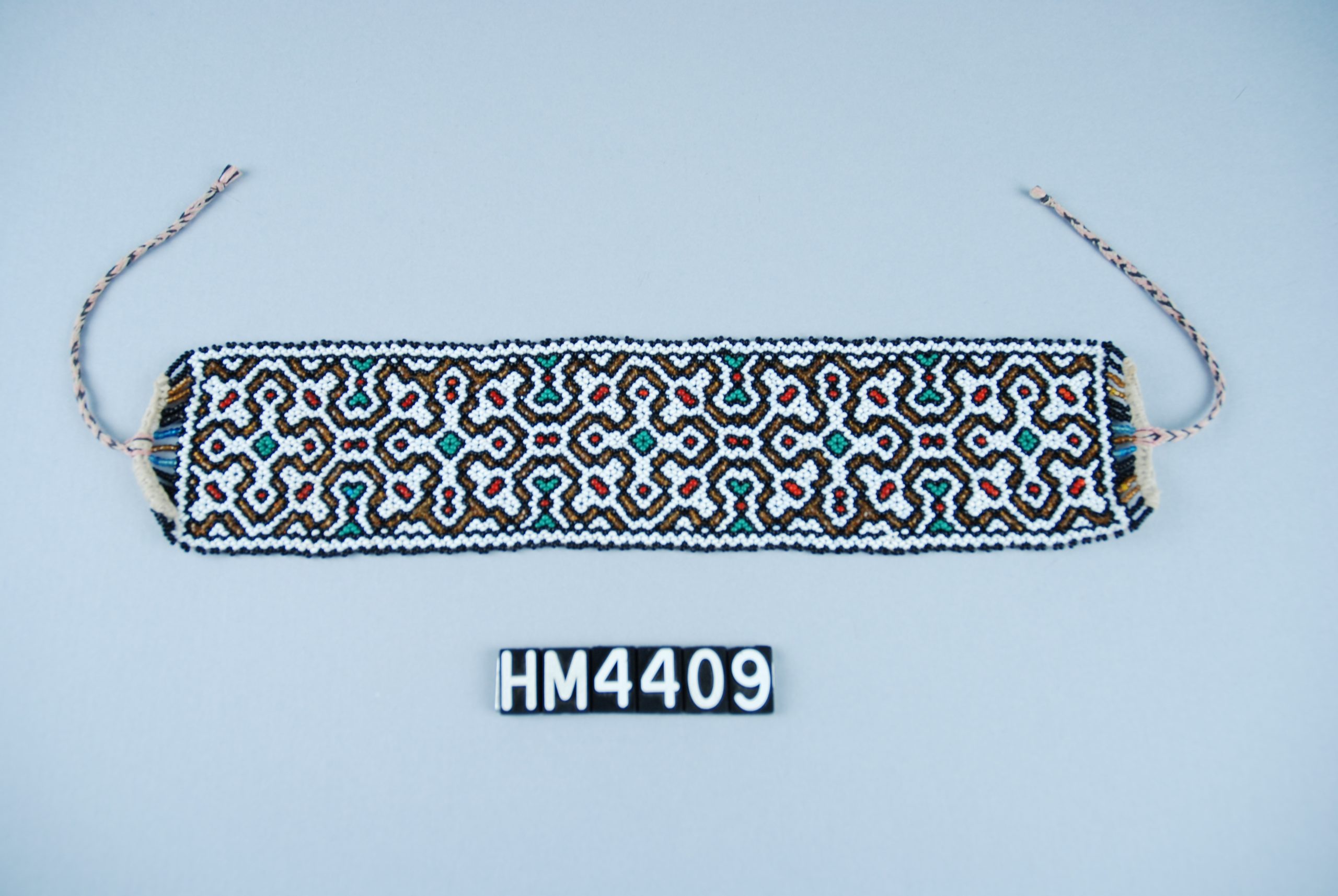
Shipibo Beaded Arm Band
c. 1950
From Tingo Maria, Peru.
Given by the family of Howard F. Allard
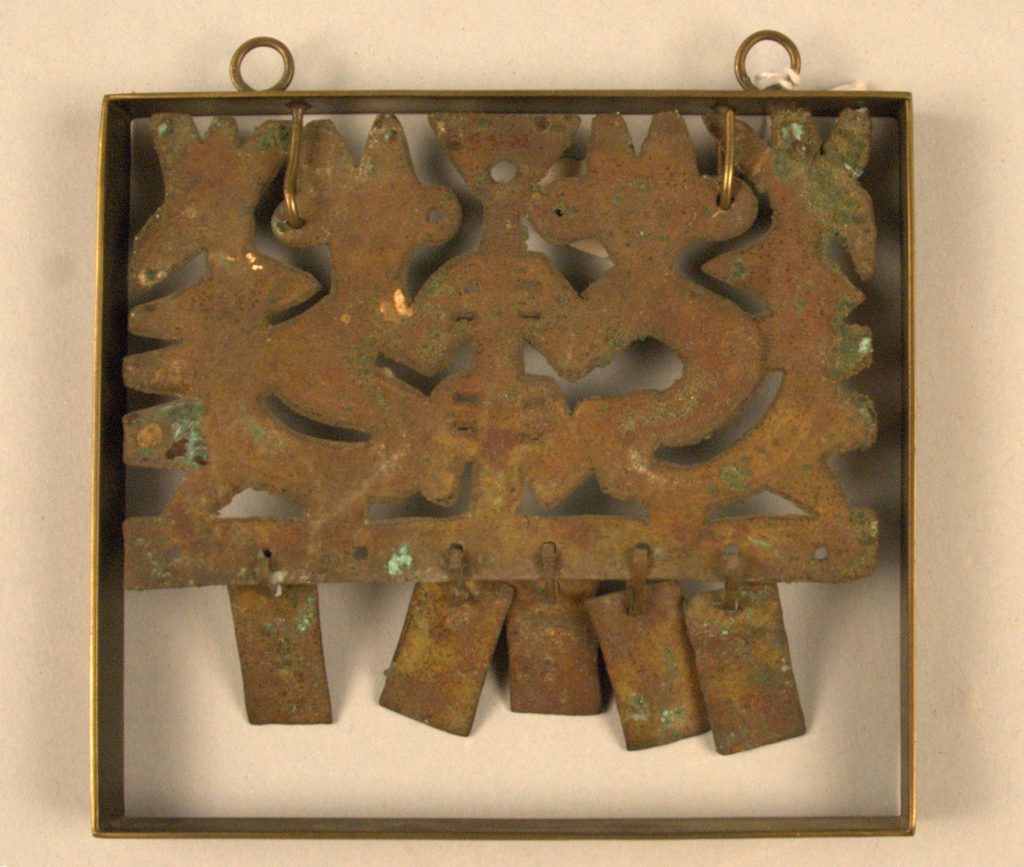
Chimu Copper Pectoral
AD 900-1470
The Chimu empire flourished on the North Coast of Peru, prior to the rise of the Inca.
Mr. and Mrs. Robert Rothschild Collection
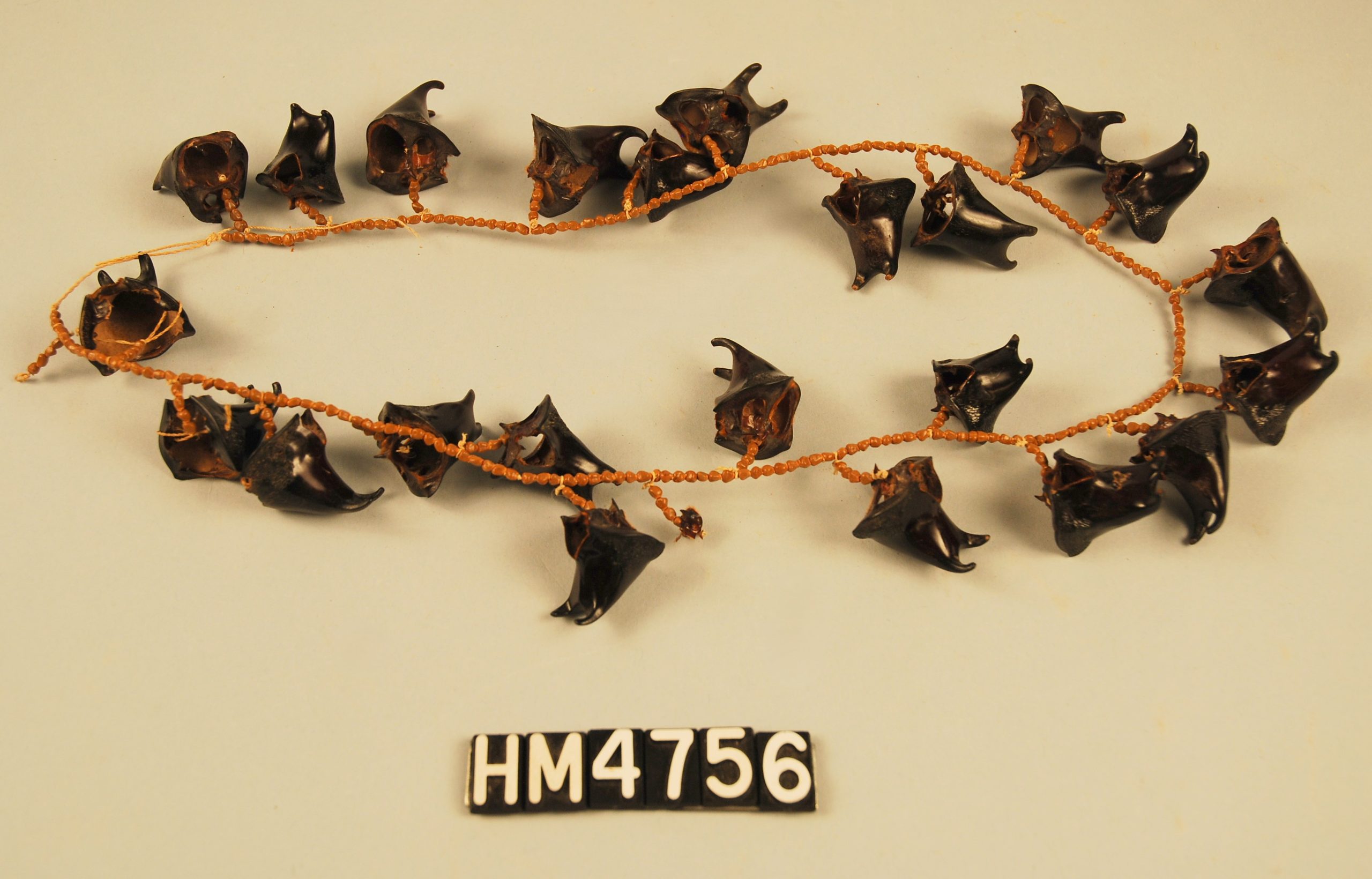

Tairona Tumbaga
10th – 16th Century
Some of the most elaborate pre-contact goldwork in the Americas was done by the Tairona people of Sierra Nevada de Santa Marta in northern
Colombia. These works were made using a lost-wax casting process and are referred to as tumbaga – an alloy of gold and copper.
From the Collection of Donald C. Corse
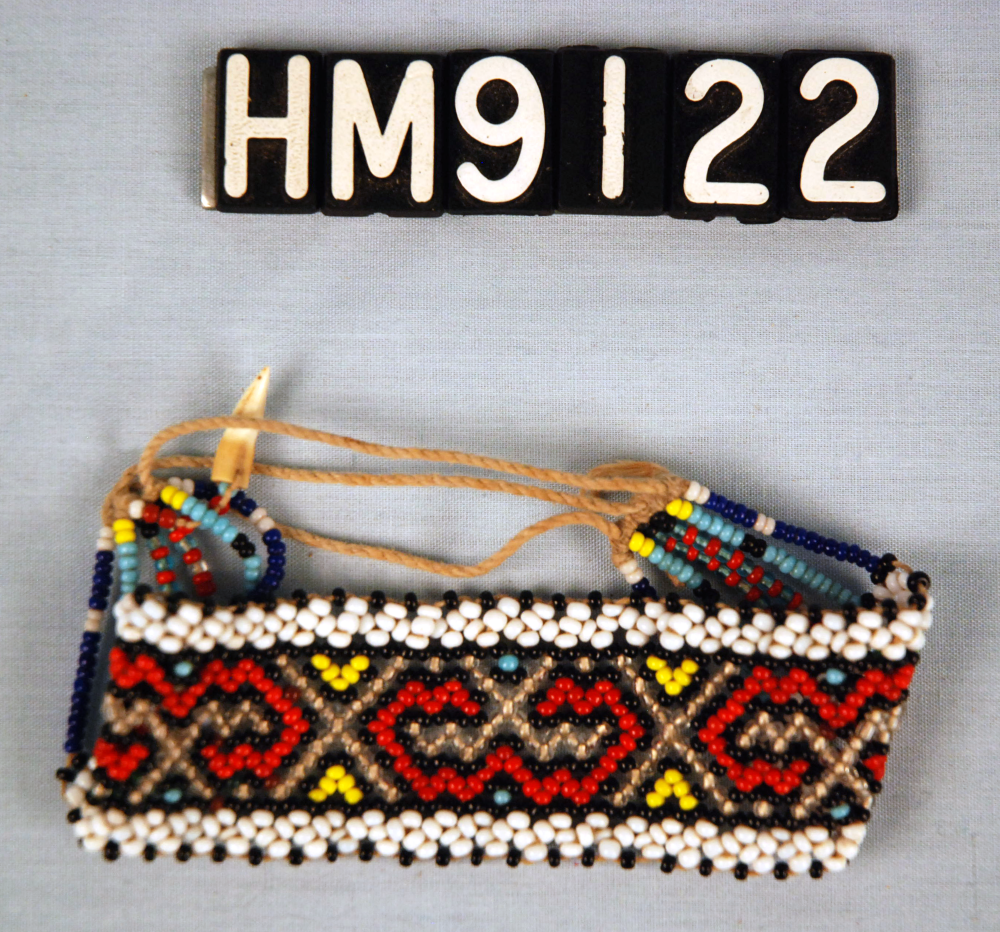
Shipibo Bracelet
c. 1980
The Shipibo live along the Ucayalli River in the Peruvian rain forest.
Brian S. Robinson Collection


